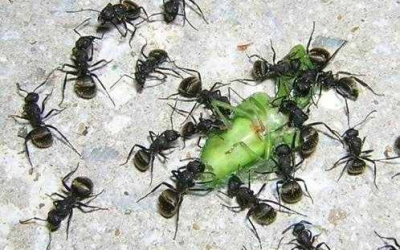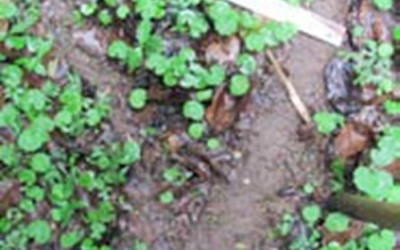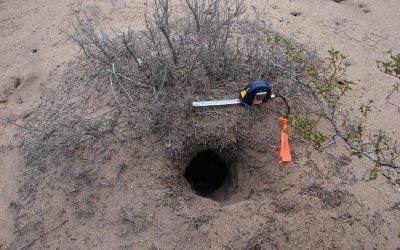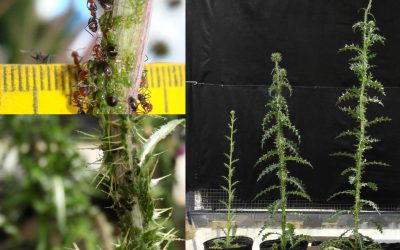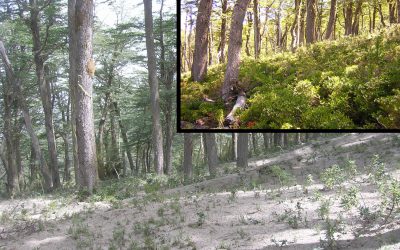Ants Research Laboratory
Our ProjectsWe use the ants to answer questions of conceptual interest.
Inefficiency versus interference in the cooperative transport: coordination costs
The transportation of objects, including food, can fluctuate between inefficiency and interference, depending of the amount of ants involved in the transport process and their experience. We study the factors that may determine the inefficiency behaviors,...
Resolution of traffic conflicts in leaf-cutting ants: foraging trail design and ant behavior in the trails
Leaf-cutting ants use a trail system to transport leaf fragments to their nests. This foraging trail system can be considered as their extended phenotype, and thus is under natural selection to reduce their costs and increase their benefits. In this...
Ant predators
Leaf-cutting ants can become important pests for agriculture and forestation. Therefore, knowing their natural enemies is very important. This project focuses on armadillos, which are omnivorous mammals that include several insects in their diets, and...
Changes in the C:N:P ratio of plants affect the outcome of ant-aphid interactions.
The aim of this work is study how the activity of soil-disturbing animals that increase soil nutrients affect the carbon: nutrient ratio of plants, which may, in turn, determine the transfer of energy and nutrients through higher trophic levels. Particularly, I study...
The spread of invasive species: monitoring the spread of Harmonia axyridis (Pallas) (Coleoptera, Coccinelidae) in Patagonia Argentina
Harmonia axyridis is an invasive species native to Asia. It is a generalized predator, highly voracious, capable of dispersing and surviving in a wide range of habitats and climates. This species represents a threat to biodiversity and generates harmful effects to...
Biological diversity in Andean systems subjected to extreme natural events
Species diversity and geographic distribution in mountain systems are affected by multiple factors, including those that vary systematically with elevation (e.g.temperature, pressure, solar radiation, area of bioclimatic floors) and others that are much more...
We work as an ant colony
We do not have central control, but we set up interaction networks through research projects
Latest news

Ecosystem services provided by ants and their implications for biological control and ecological restoration
The provision and continuity of several ecosystem services are currently threatened by land use, agriculture practices, deforestation, habitat fragmentation, climate change and biological invasions among other factors. Thus, there is an urgent need to identify and...
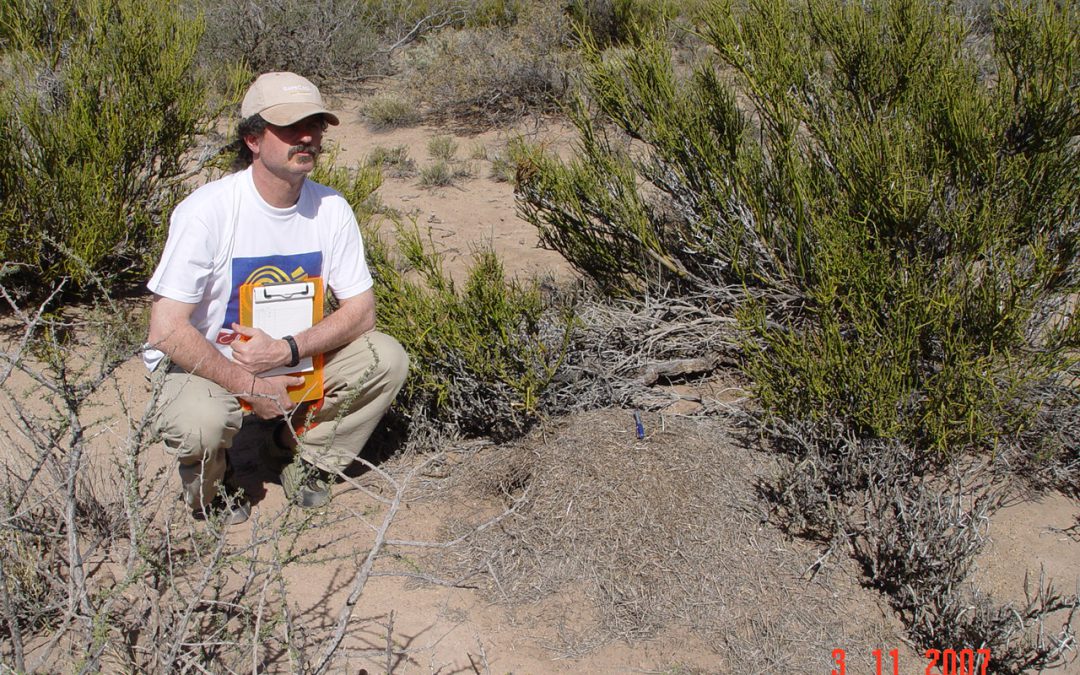
Direct and indirect effects of ants on plants
Leaf-cutting ants can affect plants negatively directly through defoliation, but positively and indirectly increasing the soil nutrient level. We study these effects separately and together, to determine the relative importance of leaf-cutting ants on...
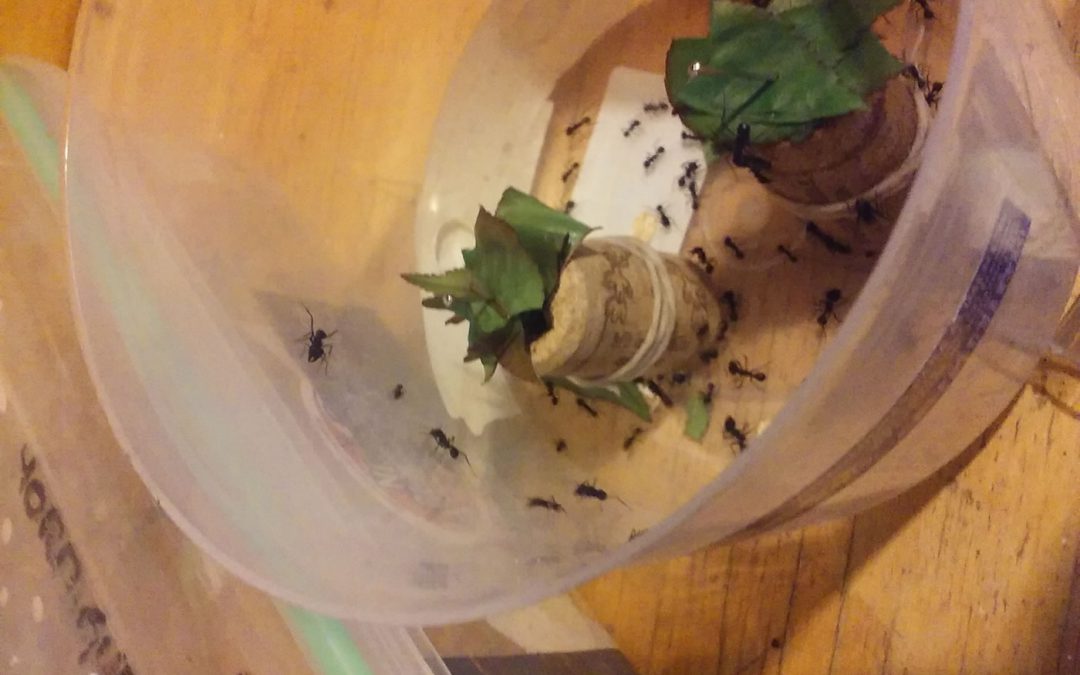
Evaluation of repellents, attractants and organic insecticides to manage leaf cutting ants
We study the behavior of cutting ants exposed certain plant compounds, which may be repellents or attractants. We also seek to identify trail pheromones that guide ants along foraging paths. The objective is to develop tools that can be used in...

